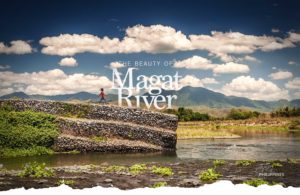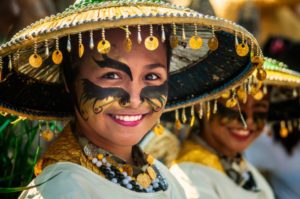
Magat River: Discovering Nueva Vizcaya’s Longest Waterway
Originally, the Magat River was located in Nueva Vizcaya province, specifically in the municipality of Aritao. It has a length of 226 kilometers and is
Located in the heart of the Peñablanca Protected Landscape and Seascape, Callao Cave is a shining example of the Philippines’ natural beauty and archaeological wealth. With its striking limestone chambers, storied past, and eco-tourism offerings, it stands as one of Cagayan’s most iconic destinations—perfect for nature lovers, history enthusiasts, and cultural explorers alike.
Callao Cave is nestled within the scenic Peñablanca Protected Landscape and Seascape, an area teeming with biodiversity and geological wonders. The cave is just one of over 300 caves found in this protected zone, with 75 documented by the National Museum since 1977. Among them, Sierra Cave and Callao Cave are the most accessible and well-known, thanks to their proximity to roads and visitor facilities.
On July 16, 1935, Proclamation No. 827 declared Callao Cave one of the Philippines’ earliest national parks, encompassing 192 hectares of protected land. This long-standing recognition highlights the cave’s importance not only as a natural formation but also as a cultural and ecological heritage site. Visitors today walk the same paths that have been preserved for nearly a century.
The cave features seven spectacular chambers, each with its own unique limestone formations and natural skylights. These crevices allow sunlight to stream through, creating a dramatic and ethereal atmosphere. A concrete staircase with 184 steps leads to the cave entrance, making it an easy and accessible adventure for most visitors.

The first chamber is the largest and most iconic—it resembles a cathedral, complete with a rock formation altar illuminated by a beam of sunlight from an opening above. Locals have transformed this space into a natural chapel, frequently used for masses and weddings.
For adventurous travelers, spelunking tours are available to explore deeper sections of Callao Cave. Guided by trained locals, visitors can learn about the cave’s geology, flora, and fauna while discovering hidden chambers and delicate rock formations. Some parts of the cave system may be off-limits to preserve the fragile ecosystem, reinforcing the area’s commitment to sustainable tourism.
RELATED STORIES

Originally, the Magat River was located in Nueva Vizcaya province, specifically in the municipality of Aritao. It has a length of 226 kilometers and is



As “Balitok” is defined as gold in Ilocano language, this was the inspiration for the festival “Balitok Ti Alicia”, that is being held to commemorate



Residents of the small town of Luna in the province of Isabela have a lot to be proud of. The town, originally known as Antatet,
Beyond the cave, the nearby Pinacanauan River offers kayaking, boat rides, and even riverbank picnics under the canopy of the Sierra Madre.
Callao Cave isn’t just a visual wonder—it’s a window into ancient human history. In 2007, archaeologists discovered human fossils within the cave, later identified in 2019 as a previously unknown species, Homo luzonensis. Dated to at least 67,000 years ago, this discovery makes Callao Cave the site of the earliest known human presence in the Philippines—and one of the oldest in Southeast Asia.
Led by Dr. Armand Salvador Mijares and his international team from the University of the Philippines, this breakthrough reshaped our understanding of human evolution in the region, earning the cave global recognition among scholars and scientists.
Whether you come for the breathtaking limestone formations, the historical insights, or the peaceful natural setting, Callao Cave promises a memorable and meaningful travel experience. Its blend of beauty, accessibility, and scientific importance makes it a true gem of Philippine tourism.
I’m looking forward to the stories and images leaving a lasting positive impression on you, just as they have on me. Stay connected with us on social media for a weekly exploration of travel assignments and breathtaking visuals. Our focus is on championing local tourism, showcasing small businesses, and honoring the magnificence of the Philippines through the content we curate. Join us in spreading the word by clicking the ‘share’ buttons below. Your support means the world to us.
EXPLORE MORE about



As “Balitok” is defined as gold in Ilocano language, this was the inspiration for the festival “Balitok Ti Alicia”, that is being held to commemorate



Originally, the Magat River was located in Nueva Vizcaya province, specifically in the municipality of Aritao. It has a length of 226 kilometers and is



Residents of the small town of Luna in the province of Isabela have a lot to be proud of. The town, originally known as Antatet,
BROWSE BY CATEGORIES